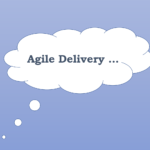How Agile is your team? How good are they at forecasting and delivering to forecast?
What are the improvement points?
Storm’s Agile Scrum Assessment is a completely neutral, independent and objective assessment. Since value is always relative to its context, there is no single metric that all organisations can pursue. We evaluate the effectiveness of your process according to what is valuable for you.
Fixed price consultancy-led assessment effectiveness with actions and strategies for improvement
The Agile Scrum Assessment is suitable for all teams who are practising Agile methods and are now ready for independent validation. Full Agile Scrum Assessment description.
The assessment process and follow-up session provides a timely boost for established teams that are ready to progress to the next level of excellence. It will also help teams that are falling behind expectations to understand what is going wrong, and what is needed to make the process work. The package includes:
- Executive summary
- Comprehensive report of your current state of Agile adoption
- On-site assessment of your team in action
- List of specific actions for immediate improvement
- Roadmap for increasing enterprise agility
- Checklist that can be used internally for future assessments
We assess Agility, not the way you are following the rules
Most teams practice Agile as a hybrid of Scrum, Kanban or Lean, a bit of XP plus a healthy dose of whatever they are most familiar with. Whilst this may not be the ideal approach, and may cause challenges, it is the reality for most of our clients.
We don’t take the usual “religious” approach of assessing pure Scrum, XP, DSDM or SAFe rituals. We won’t award your team a silver instead of a gold star because someone said “daily stand-up” instead of “scrum”. Or tell you to stop calling your BAs “BAs”!
Enjoy these benefits from your assessment:
- Shared platform for understanding and discussion with stakeholders
- Agility validated in terms of the Agile Manifesto, irrespective of the methodology evolved
- Identify potential risks and future threats that may impact performance
- Determine the team’s effectiveness in forecasting and delivering results
- Identify indicators of value and drivers for metrics
Tales from the Front Line
These are real replies to the question: “you’ve been implementing Agile in your development team for a while, what benefits have you seen?”
“We’ve only be doing it for 6 months so it’s a bit early to expect anything significant.”
Bad news! Make changes every sprint until you see the benefits. If it hasn’t worked after 3 months you’re doing something very wrong – seek help or revert.
“the team’s velocity has increased a little, but I’ve been told average velocity gain should be 750%.”
Be careful here. It’s easy to confuse work delivered which may be quoted as “story points” with velocity which is quoted as story points per sprint. Velocity is only useful for forecasting the next sprint. If velocity was 150 last sprint, then 150 is the starting point for planning the next sprint. Any attempt to increase velocity will break Scrum.


